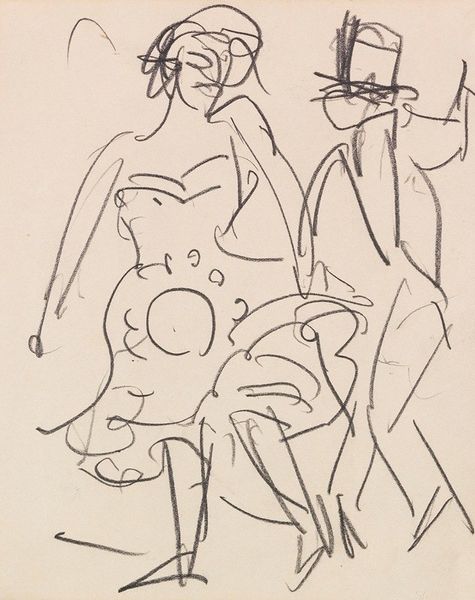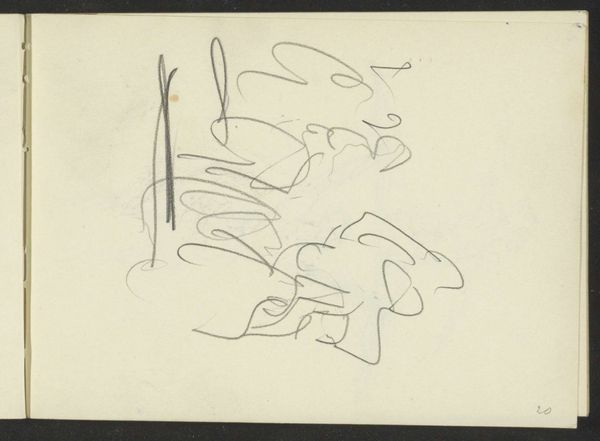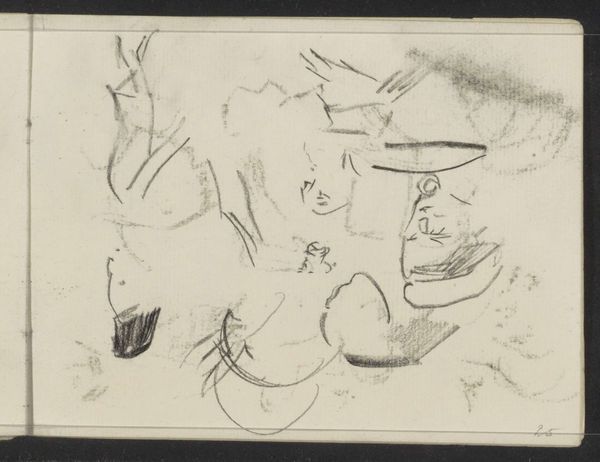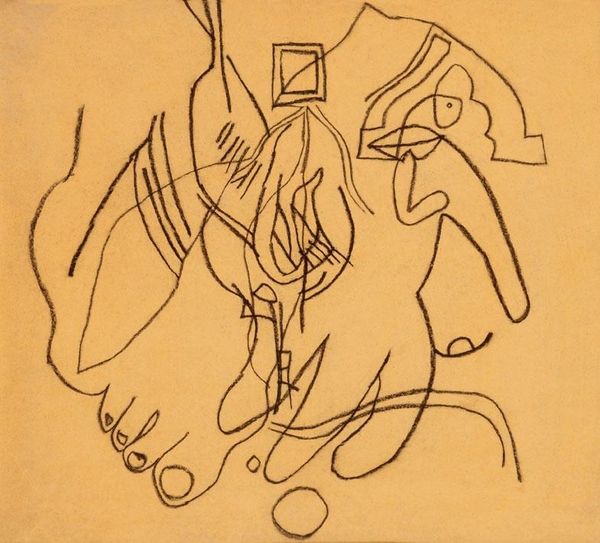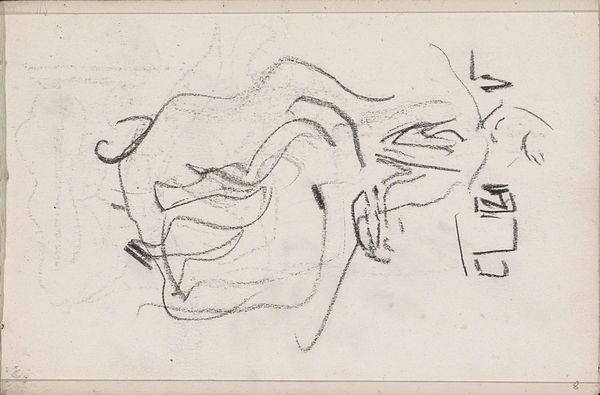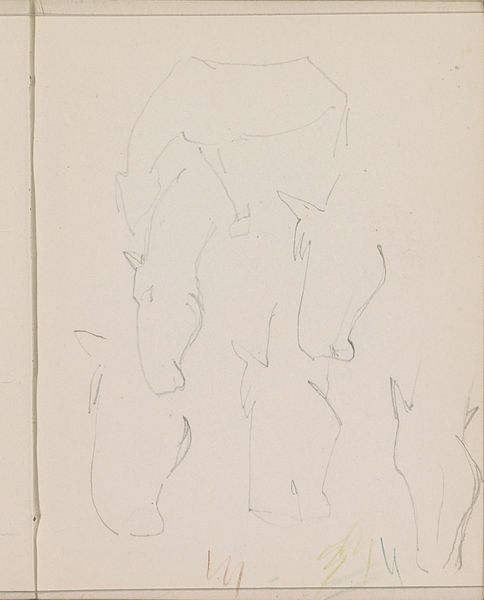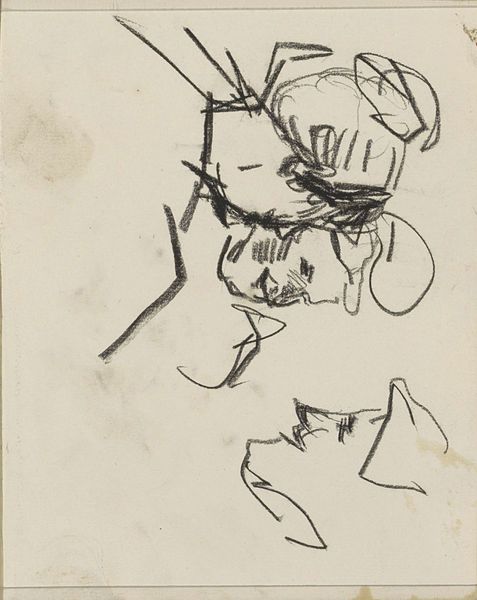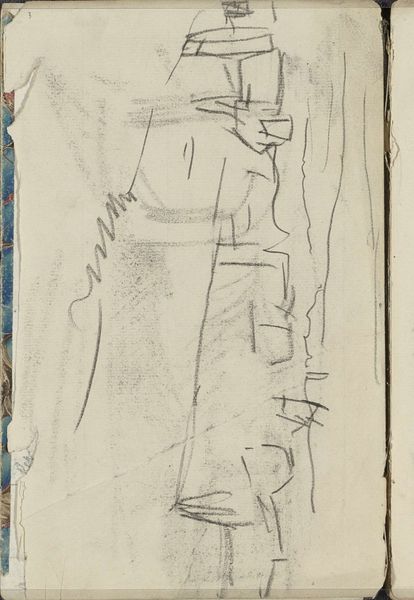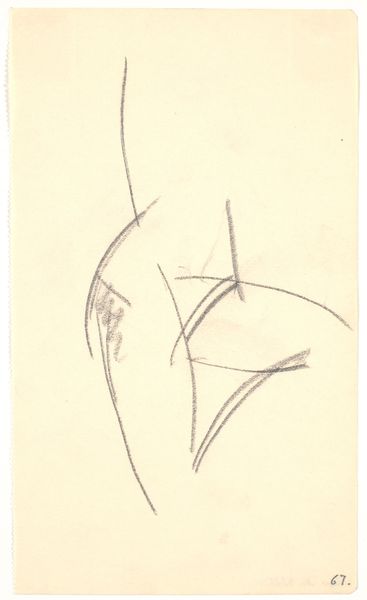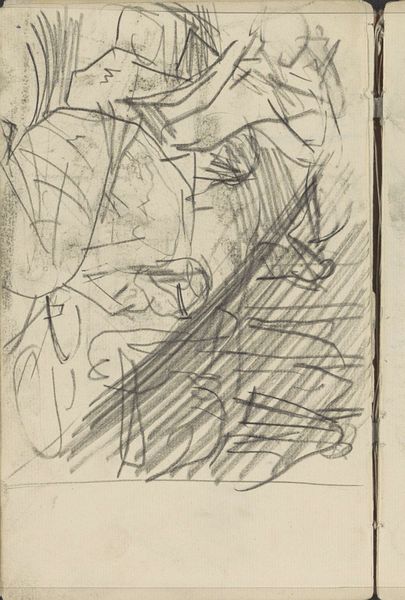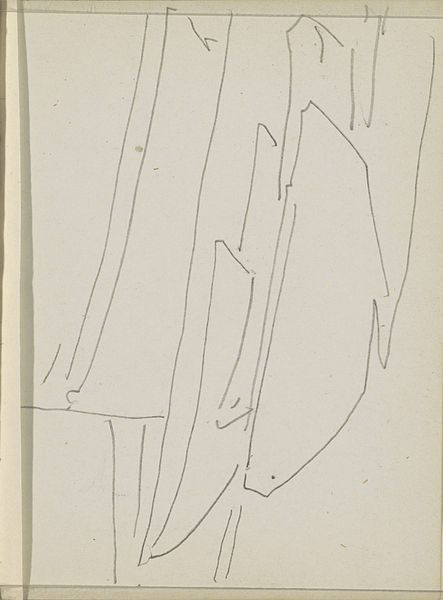
drawing, print, ink
#
drawing
#
cubism
#
amateur sketch
# print
#
pen sketch
#
incomplete sketchy
#
figuration
#
personal sketchbook
#
ink
#
sketchwork
#
ink drawing experimentation
#
pen-ink sketch
#
abstraction
#
line
#
pen work
#
sketchbook drawing
#
sketchbook art
Copyright: National Gallery of Art: CC0 1.0
Curator: Here we have Pablo Picasso’s "The Diver (La plongeuse)" from 1932, an ink drawing exhibiting a Cubist style. Editor: It strikes me immediately as frenetic, yet there's a sense of playfulness despite the angular forms and apparent disarray. Curator: Precisely. Observe how Picasso deconstructs the figure. The fragmentation, the lines that both define and obscure, they create a dynamic tension. Notice the interplay between the positive and negative space; it challenges our perception. Editor: That fragmentation speaks to the disruption of identity that characterised the interwar period. This "diver" isn’t simply diving, she's being pulled apart, perhaps reflecting anxieties about the changing roles of women and the societal pressures they faced. Curator: An intriguing interpretation. I am more focused on the composition itself, where the dynamism lies in the push and pull of the abstract geometric shapes interacting with the curvilinear forms. There’s a sophisticated dialogue between them. Editor: But consider the context. Picasso had a tumultuous personal life. His relationships with women were complex, to say the least. Perhaps this diver represents the women in his life, simultaneously objectified and idolised. Curator: You contextualise through a biographical lens, while my inclination is toward the artwork's intrinsic qualities: line, form, space. The abstraction allows for multiple readings, of course, but focusing on the materiality avoids anecdotal distractions. Editor: Agreed. And by inviting conversations like this, art unveils so many different layers that would otherwise stay unnoticed. Curator: Ultimately, "The Diver" serves as a striking testament to Picasso's revolutionary approach to figuration. Editor: And highlights how art can simultaneously embody both personal turmoil and societal transformation.
Comments
No comments
Be the first to comment and join the conversation on the ultimate creative platform.
